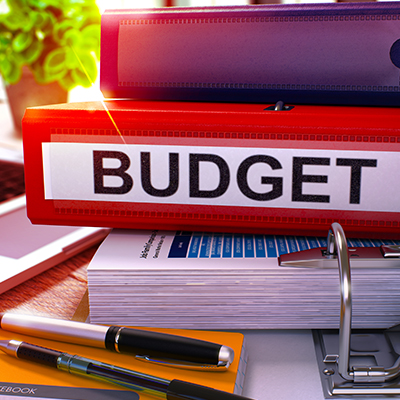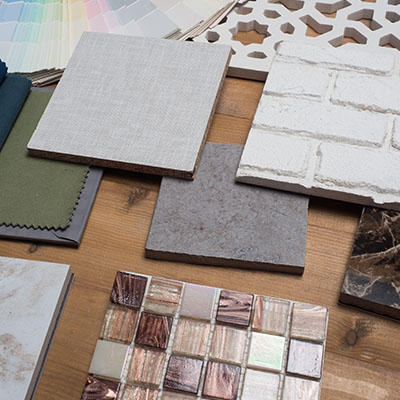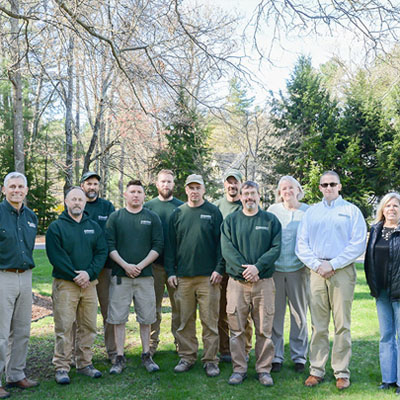Our Process
- Home >
- Our Process
“If you can’t describe what you are doing as a process, you don’t know what you’re doing.”
-W. Edwards Deming
Table of Contents
Our Process
Are We a Fit?
Phone Conversation
Introductory Meeting
Project Development
Regulatory Feasibility
Preliminary Design
Draft Budget & Construction Commitment
Final Project Definition
Final Designs and Construction Drawings
Permit Procurement
Selections
Project Specifications
Construction Contract
Construction
Preparation
Pre-Construction Meeting
Guided Approach to Construction
Substantial Completion
Reflection
Useful Resources

When the company was fairly young, I read Michael Gerber’s book “The E-Myth Revisited: Why Most Small Businesses Don’t Work and What to Do About It”. This small book is a serious eye-opener for those starting or running a small business. I was intrigued by many great ideas in this book, particularly the concepts of repeatability with different personnel and the creation of systems and processes for a consistent, effective, and orderly way of doing business. As such, this book was the primary catalyst for us to establish our methods.
What helped us decide what we wanted our systems to do was Stephen Covey’s Time Management Matrix, which is actually Dwight Eisenhower’s Decision Principle. It uses four quadrants to determine the priority of a task:
- Urgent & Important
- Not Urgent, but Important
- Urgent, but Not Important
- Not Urgent & Not Important
We decided to focus on quadrant 2, the not urgent but important things (prevention, planning, improvement) to minimize the crises and emergencies found in quadrants 1 and 3.
These principles helped guide the development of our practices and continue to help us improve them.
This page is a basic outline of our process. We hope it will help you better understand our approach and give you a clear vision of how we transform abstract thoughts into tangible results.

For us, “fit” is the most important attribute when hiring a new employee. No matter how much experience or skill someone possesses, there is no advantage if the person is not a good fit with the company or the company is not a good fit for the person.
We’ve found that the concept of prioritizing fit also helps us decide if we should move forward together. No matter how in-depth our experience is or how great our skills are, it just doesn’t work if we’re not a fit with you.
Finding fit can be objective, subjective, or both. It’s not a perfect science, but we’ve found that a decision can usually be made with a phone conversation and a meeting.

Our process starts with a simple phone conversation to discuss the probability of a potential fit. We believe we can save time with a short discussion.
We’ll start by learning how you heard of us, the location of your project, what you’d like done and why, and your experiences with contractors. We’ll also discuss your desired schedule, budget, timeframe of the project, how long you expect to live in your home—things like that.
If we both agree that we may be a fit, we’ll schedule a meeting.

We request that all decision-makers attend the introductory meeting.
Prior to the meeting we may ask that you make a list of:
- Your “must haves”
- Your “would like to have”
- Your “blue sky” if money is no object
During the meeting, we’ll go on a walk-through of the property where work is to be done.
If you’ve completed a wish list, we’ll talk about that.
From there, we’ll review schedule expectations versus realities. We’ll talk about budget again—this time with added understanding of site conditions—and we’ll set reasonable expectations about cost and discuss what is sensible.
We’ll leave you our Warranty, Project Development Agreement, and a ten-page list of client references with short descriptions of their projects from present work backward approximately fifteen years.
There is no cost associated with the initial call or introductory meeting.

This is where we begin our work together to develop your project to the point where we have a construction contract. Our project development agreement identifies your initial goals and describes the steps and associated costs as we work from concept to contract.
The agreement is structured to align with our number one core value: client comfort. We believe it is up to us to earn and maintain your trust throughout the project development process, so we’ve structured an agreement to allow you to stop at any time if you become uncomfortable.

Understanding where your project will be affected by regulatory parameters and logistical conditions provides direction and avoids spending time and money pursuing ideas that can’t be approved or that may seem excessive.
- We research to identify possible regulatory constraints.
- We look for logistical limitations that may hinder or prevent some or all of your desired project.
- If your project is part of a private district or association, we review its bylaws as they apply to your project.
- We facilitate services such as survey, engineering, and legal counsel if needed and desired.
- We’ll meet with agents and boards of your municipality as appropriate.
- Costs related to the feasibility study are detailed in our project development agreement.
- At this point you may choose to continue or halt the project development process.

Once we have a positive outcome from the feasibility study, we move to design with your authorization. We’ll work with you to develop preliminary architectural and systems designs to a point where we can create a first-draft budget.
The existing conditions survey forms the basis from which to evaluate changes that ultimately affect design and cost. We will visit the site, take lots of pictures and measurements, and catalog existing materials and systems.
We will create as-built drawings from which design modifications are made based on details of existing conditions.
Design fees are detailed in our project development agreement.
At any point during design, you may pay fees due and halt the process.
Visit our Design page for more info.

Draft Budget
Once you are satisfied with the preliminary designs, we’ll create a first draft budget using in-house cost data and allowance values. The draft budget is more reliable than ballpark or unit pricing; however, it is not intended as a contract price. We combine the draft budget with the preliminary designs to form a checkpoint for review and conversation. Depending on how well it all fits for you, we may discuss other ideas and options to better fulfill your goals. At this point, we’ll all have a pretty good idea about the direction of designs and projected costs, so you can decide how or whether to continue.
There is no cost or further obligation for this part.
Construction Commitment
A deposit of approximately 5 percent of the draft budget amount authorizes commencement of the final project definition and secures a slot in our construction schedule.
Your construction commitment deposit will be credited toward the construction contract.

At this point, we have a good indication of your project’s design and specifications and an idea of its cost; however, we do not have the information needed for contracts, permits, and construction. Final Project Definition is where we complete designs, make selections, write specifications, execute a construction contract, and begin the process of securing permits.

We’ll work with you to modify and finalize architectural and systems designs and then create drawings as needed for permitting and construction.
Design fees are detailed in our project development agreement.

Obtaining all the required permits can be time consuming, so we begin the permitting process as soon as advisable and agreeable to minimize potential delays for start of construction.
This step may involve:
- Arrange and manage other professionals (engineers, surveyors, attorneys, etc.)
- Attend and present at municipal agencies and meetings
- Provide administrative support
- Provide field support
Fees for procuring permits are detailed in our project development agreement.

We work with you to choose elements to be incorporated into your finished project. Our interior designer will ensure that all elements coordinate and are delivered on time without last-minute-decision stress. Selections that are not completed prior to execution of the construction contract are represented as allowances within the contract. This allows more time to decide on finishes, should you need it.
Selection services up to .5 percent of the contract price are included.

At this phase in the process, we collaborate with you to create project specifications. Here we describe elements not otherwise defined by the plans or other sources.
There is no cost for creating the project specifications document; however, there are costs to determine elements within the specifications, such as permit procurement services, building and mechanical systems design, and selection services. These fees are detailed in our project development agreement.

After plans and specifications are completed, we will produce a detailed contract proposal for your project. Once executed, this proposal becomes the construction contract.
There is no cost for our preparation of our contract proposal.

The construction phase is where you’ll finally be able to see, touch, and feel the results of all the planning work. It’s when it becomes both serious and fun. We’ll pass the baton to your Project Supervisor, who will lead the way to the finish line.

Comprehensive preparation is undertaken to ensure the personnel supervising the project know the job as well as those who developed it.
A detailed project site file is created and reviewed with the assigned Project Supervisor. We call this the turnover meeting.
The Project Supervisor studies the project file and establishes a project management plan.

We’ll schedule a pre-construction meeting with you where you will meet your assigned Project Supervisor, and we’ll talk about things that may affect your world during construction. We will:
- Discuss communication logistics
- Review schedules
- Discuss site logistics
- Discuss safety and health strategies
- Review administrative logistics

Your comprehensive construction team is crafted to meet your project’s needs, to ensure collaboration, and to follow our processes to help keep your construction work and results as predictable as possible.
Visit our Construction page for more info.

When the project supervisor considers your project to be substantially complete, he or she will set up a time to perform a walk-through of the project with you to make sure you agree and to identify items to be considered delayed details on which the delayed detail payment will be based.
There may be items at this time or after this walk-through that need addressing under our warranty.

The Project Lead will perform a final walk-through and exit interview to discuss how your project went, how the team performed, and ultimately, if we met, exceeded, or fell short of your expectations and how.
Many times, your feedback is used to acknowledge exemplary work among our team; other times, it’s a great source for improvement efforts.
